Instruction
How a cure for athlete’s foot can lead to longer drives
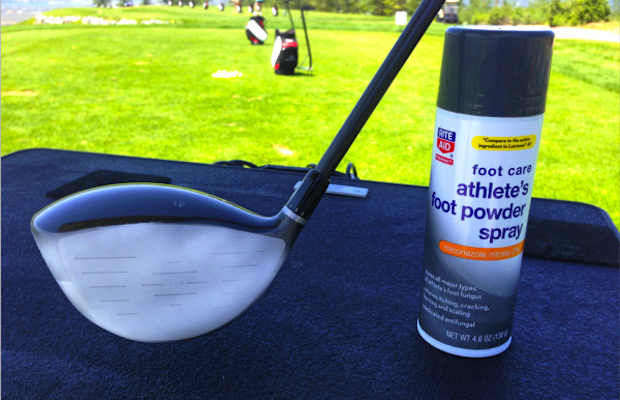
Impact is arguably the most important part of the golf swing. It’s the only point in which the golf club meets the golf ball and it’s where the ball is programmed with all the information necessary to find its landing point: good, bad or indifferent.
When I ask students where they are impacting the ball with their driver, I tend to hear answers based on where they hit the ball on the horizontal line of the face (the toe, center, or the heel of the club). What they don’t realize is that they’re only telling me half of the impact equation.
You must not forget about the vertical impact point, which can be low, center, or high on the face. Each of these impact points cause a different reaction and below I will show you how different impact points affect ball flight.
The Experiment
First, go to the store and get a can of athlete’s foot spray powder. This is what you will use to mark your clubface as shown in the photo above. It will not damage the club and will come off with a wet towel. Just make sure you get the one that does NOT dry clear or you will not be able to “see” your impact point.
Second, spray the face.
Next, divide the face into the four quadrants. This makes it easier to figure out where you struck the ball on the face. I have marked the face right across the center scoring line and in the vertical center of the club (as best as I can determine). This will help you gain an understanding of the relationship between impact point and ball flight.
For the sake of this article, we will assume that all drivers have the same center of gravity location and that it’s right in the center of the club face. Therefore, the general statements I will make regarding impact will apply to all manufactures’ driver models.
Hit a few balls and chart where the impact point is. This will help you to understand your trends as it pertains to impact. Understand that every impact point can and will influence the ball in some type of manner.
Understanding Your Results
Horizontal impact points invoke a gear effect that causes the ball to curve back to the center-line when you hit the toe and the heel of the club. Toe hits usually produce hooks and heel hits usually produce slices, however, gear effect can be influenced or negated by the way the club and face move through impact, so be careful. These are just the typical way that balls tend to move when hit on different areas of the face.
Vertical impact causes a different type of gear effect, one that influences your launch angle and spin rates. A high vertical hit, just above the center line of the face, tends to give us high launch and low spin. Hits below the center line tend to give us a lower launch and higher spin.
We have all seen a golfer hit the ball low on the face and watch it spin up to its apex and fall from the sky with little to no roll. On the other hand, tour professionals tend to produce high-launching, low-spinning shots with their drivers that carry a long way and then roll even farther. They impart a low amount of spin by hitting their drives above the center line of their driver face.
A great friend of mine in the business, James Leitz, who is a Golf Magazine Top-100 Teacher and a Golf Digest Top-100 Club Fitter, has one of the best charts I have seen regarding the effects of off-center hits. He is very knowledgeable regarding Trackman results and how the radar system interacts with golf clubs and their design. If you are ever in New Orleans, I suggest you look him up for a session!
James worked with a robot at a major OEM and charted a few notable things regarding impact points – both vertical and horizontal – as they pertained to ball speed, launch and spin rates. It’s funny how a shot hit just a few dimples off-center can drastically affect ball flight in so many ways. The charts below illustrate his findings:
Final Thoughts
As I stated in a past article and reiterate below, impact control on both the horizontal and vertical axis is key to controlling your golf ball.
- The higher handicap a golfer has, the more random the impact locations generally are.
- Radical horizontal off-center impact locations invoke gear effect, making prediction of shot curvature impossible.
- Extreme vertical off-center impact locations cause excessively high and low spin rates, making driver distance vary dramatically.
- Higher handicap players tend to have swing plane issues that cause impact to be too high on the face, toward the crown of the club. That creates the shot we all know as a “pop-up.”
- Mid-handicap players tend to have pivot issues that cause them to hit too much up on the ball. They tend to hit shots that are topped, flat, or very low.
- As handicap levels go down, players tend to find the center of the face more often within reason.
- As mid-handicap players move down to into the lower-teen handicap levels, there tends to be a consistent impact location toward the toe or heel.
- At single-digit handicap levels, centered impact isn’t that big of a problem and gear effect is minimal.
- As handicaps get closer to zero, vertical impact location becomes increasingly important.
- Tour Players can easily control their vertical impact location to launch the ball with more or less spin depending on what type of shot they desire.
Please take the time to use your spray and the chart that James has given us to learn more from your practice sessions and have more fun hitting tee shots!
- LIKE102
- LEGIT17
- WOW16
- LOL3
- IDHT3
- FLOP3
- OB2
- SHANK6
Instruction
The Wedge Guy: The easiest-to-learn golf basic

My golf learning began with this simple fact – if you don’t have a fundamentally sound hold on the golf club, it is practically impossible for your body to execute a fundamentally sound golf swing. I’m still a big believer that the golf swing is much easier to execute if you begin with the proper hold on the club.
As you might imagine, I come into contact with hundreds of golfers of all skill levels. And it is very rare to see a good player with a bad hold on the golf club. There are some exceptions, for sure, but they are very few and very far between, and they typically have beat so many balls with their poor grip that they’ve found a way to work around it.
The reality of biophysics is that the body moves only in certain ways – and the particulars of the way you hold the golf club can totally prevent a sound swing motion that allows the club to release properly through the impact zone. The wonderful thing is that anyone can learn how to put a fundamentally sound hold on the golf club, and you can practice it anywhere your hands are not otherwise engaged, like watching TV or just sitting and relaxing.
Whether you prefer an overlap, interlock or full-finger (not baseball!) grip on the club, the same fundamentals apply. Here are the major grip faults I see most often, in the order of the frequency:
Mis-aligned hands
By this I mean that the palms of the two hands are not parallel to each other. Too many golfers have a weak left hand and strong right, or vice versa. The easiest way to learn how to hold the club with your palms aligned properly is to grip a plain wooden ruler or yardstick. It forces the hands to align properly and shows you how that feels. If you grip and re-grip a yardstick several times, then grip a club, you’ll see that the learning curve is almost immediate.
The position of the grip in the upper/left hand
I also observe many golfers who have the butt of the grip too far into the heel pad of the upper hand (the left hand for right-handed players). It’s amazing how much easier it is to release the club through the ball if even 1/4-1/2″ of the butt is beyond the left heel pad. Try this yourself to see what I mean. Swing the club freely with just your left hand and notice the difference in its release from when you hold it at the end of the grip, versus gripping down even a half inch.
To help you really understand how this works, go to the range and hit shots with your five-iron gripped down a full inch to make the club the same length as your seven-iron. You will probably see an amazing shot shape difference, and likely not see as much distance loss as you would expect.
Too much lower (right) hand on the club
It seems like almost all golfers of 8-10 handicap or higher have the club too far into the palm of the lower hand, because that feels “good” if you are trying to control the path of the clubhead to the ball. But the golf swing is not an effort to hit at the ball – it is a swing of the club. The proper hold on the club has the grip underneath the pad at the base of the fingers. This will likely feel “weak” to you — like you cannot control the club like that. EXACTLY. You should not be trying to control the club with your lower/master hand.
Gripping too tightly
Nearly all golfers hold the club too tightly, which tenses up the forearms and prevents a proper release of the club through impact. In order for the club to move back and through properly, you must feel that the club is controlled by the last three fingers of the upper hand, and the middle two fingers of the lower hand. If you engage your thumbs and forefingers in “holding” the club, the result will almost always be a grip that is too tight. Try this for yourself. Hold the club in your upper hand only, and squeeze firmly with just the last three fingers, with the forefinger and thumb off the club entirely. You have good control, but your forearms are not tense. Then begin to squeeze down with your thumb and forefinger and observe the tensing of the entire forearm. This is the way we are made, so the key to preventing tenseness in the arms is to hold the club very lightly with the “pinchers” — the thumbs and forefingers.
So, those are what I believe are the four fundamentals of a good grip. Anyone can learn them in their home or office very quickly. There is no easier way to improve your ball striking consistency and add distance than giving more attention to the way you hold the golf club.
More from the Wedge Guy
- The Wedge Guy: Golf mastery begins with your wedge game
- The Wedge Guy: Why golf is 20 times harder than brain surgery
- The Wedge Guy: Musings on the golf ball rollback
- LIKE80
- LEGIT13
- WOW4
- LOL1
- IDHT0
- FLOP4
- OB1
- SHANK8
Instruction
Clement: Stop ripping off your swing with this drill!

Not the dreaded headcover under the armpit drill! As if your body is defective and can’t function by itself! Have you seen how incredible the human machine is with all the incredible feats of agility all kinds of athletes are accomplishing? You think your body is so defective (the good Lord is laughing his head off at you) that it needs a headcover tucked under the armpit so you can swing like T-Rex?
- LIKE0
- LEGIT1
- WOW2
- LOL0
- IDHT0
- FLOP0
- OB0
- SHANK2
Instruction
How a towel can fix your golf swing

This is a classic drill that has been used for decades. However, the world of marketed training aids has grown so much during that time that this simple practice has been virtually forgotten. Because why teach people how to play golf using everyday items when you can create and sell a product that reinforces the same thing? Nevertheless, I am here to give you helpful advice without running to the nearest Edwin Watts or adding something to your Amazon cart.
For the “scoring clubs,” having a solid connection between the arms and body during the swing, especially through impact, is paramount to creating long-lasting consistency. And keeping that connection throughout the swing helps rotate the shoulders more to generate more power to help you hit it farther. So, how does this drill work, and what will your game benefit from it? Well, let’s get into it.
Setup
You can use this for basic chip shots up to complete swings. I use this with every club in my bag, up to a 9 or 8-iron. It’s natural to create incrementally more separation between the arms and body as you progress up the set. So doing this with a high iron or a wood is not recommended.
While you set up to hit a ball, simply tuck the towel underneath both armpits. The length of the towel will determine how tight it will be across your chest but don’t make it so loose that it gets in the way of your vision. After both sides are tucked, make some focused swings, keeping both arms firmly connected to the body during the backswing and follow through. (Note: It’s normal to lose connection on your lead arm during your finishing pose.) When you’re ready, put a ball in the way of those swings and get to work.

Get a Better Shoulder Turn
Many of us struggle to have proper shoulder rotation in our golf swing, especially during long layoffs. Making a swing that is all arms and no shoulders is a surefire way to have less control with wedges and less distance with full swings. Notice how I can get in a similar-looking position in both 60° wedge photos. However, one is weak and uncontrollable, while the other is strong and connected. One allows me to use my larger muscles to create my swing, and one doesn’t. The follow-through is another critical point where having a good connection, as well as solid shoulder rotation, is a must. This drill is great for those who tend to have a “chicken wing” form in their lead arm, which happens when it becomes separated from the body through impact.
In full swings, getting your shoulders to rotate in your golf swing is a great way to reinforce proper weight distribution. If your swing is all arms, it’s much harder to get your weight to naturally shift to the inside part of your trail foot in the backswing. Sure, you could make the mistake of “sliding” to get weight on your back foot, but that doesn’t fix the issue. You must turn into your trial leg to generate power. Additionally, look at the difference in separation between my hands and my head in the 8-iron examples. The green picture has more separation and has my hands lower. This will help me lessen my angle of attack and make it easier to hit the inside part of the golf ball, rather than the over-the-top move that the other picture produces.


Stay Better Connected in the Backswing
When you don’t keep everything in your upper body working as one, getting to a good spot at the top of your swing is very hard to do. It would take impeccable timing along with great hand-eye coordination to hit quality shots with any sort of regularity if the arms are working separately from the body.
Notice in the red pictures of both my 60-degree wedge and 8-iron how high my hands are and the fact you can clearly see my shoulder through the gap in my arms. That has happened because the right arm, just above my elbow, has become totally disconnected from my body. That separation causes me to lift my hands as well as lose some of the extension in my left arm. This has been corrected in the green pictures by using this drill to reinforce that connection. It will also make you focus on keeping the lead arm close to your body as well. Because the moment either one loses that relationship, the towel falls.


Conclusion
I have been diligent this year in finding a few drills that target some of the issues that plague my golf game; either by simply forgetting fundamental things or by coming to terms with the faults that have bitten me my whole career. I have found that having a few drills to fall back on to reinforce certain feelings helps me find my game a little easier, and the “towel drill” is most definitely one of them.
- LIKE11
- LEGIT1
- WOW2
- LOL0
- IDHT0
- FLOP2
- OB0
- SHANK8
-

 19th Hole1 week ago
19th Hole1 week agoJohn Daly stuns fans into silence with brutal opening tee shot on PGA Tour Champions
-

 19th Hole2 days ago
19th Hole2 days agoThings got heated at the Houston Open between Tony Finau and Alejandro Tosti. Here’s why
-

 19th Hole2 weeks ago
19th Hole2 weeks ago2-time major champ announces shock retirement from the sport at age of 33
-

 19th Hole1 week ago
19th Hole1 week agoCharlie Woods finds it tough going on American Junior Golf Association debut
-

 19th Hole2 weeks ago
19th Hole2 weeks agoEdoardo Molinari reveals the latest PGA Tour golfer to turn down ‘good offer’ from LIV Golf
-

 Equipment3 weeks ago
Equipment3 weeks agoBest driver 2024: The best driver for you, as recommend by expert club fitters
-

 19th Hole2 weeks ago
19th Hole2 weeks agoScottie Scheffler had an interesting response when asked how he ‘quiets the noise’ following Players victory
-

 19th Hole2 weeks ago
19th Hole2 weeks agoJon Rahm dealt fresh blow to hopes of qualifying for 2025 Ryder Cup

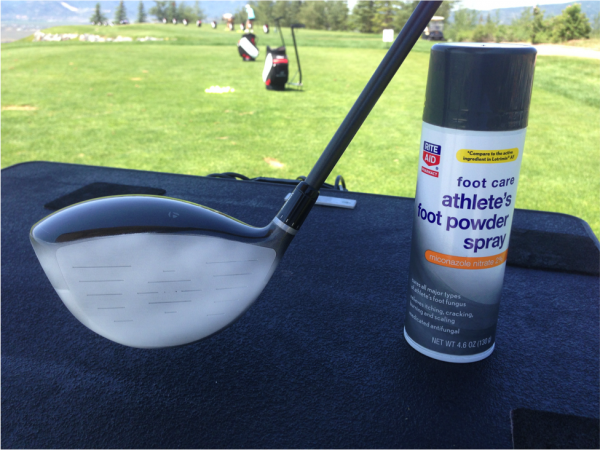
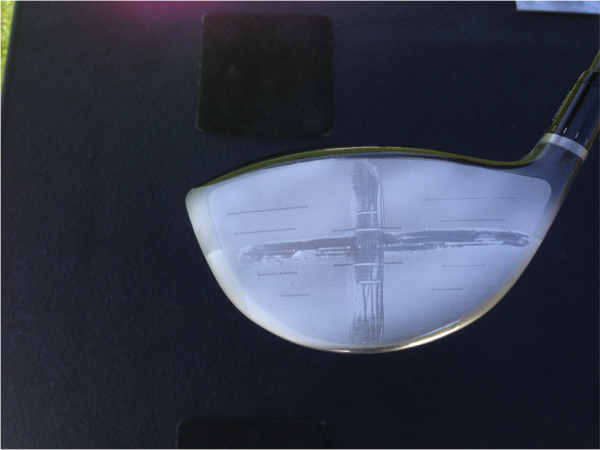
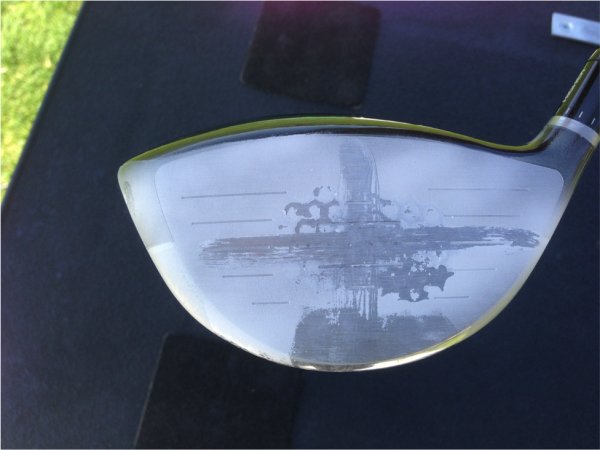
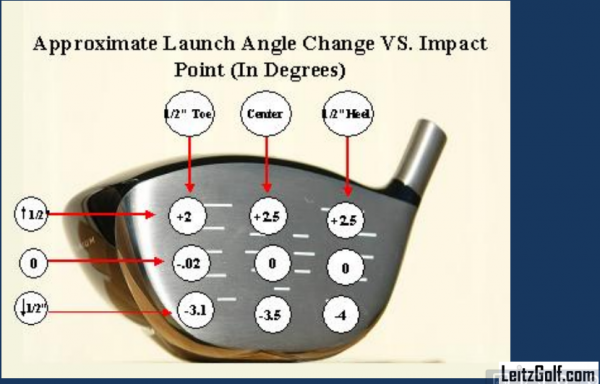
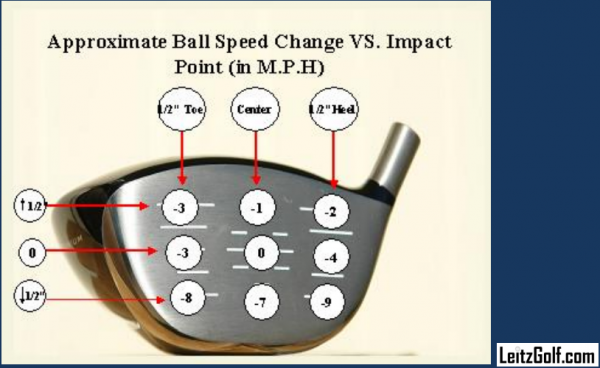
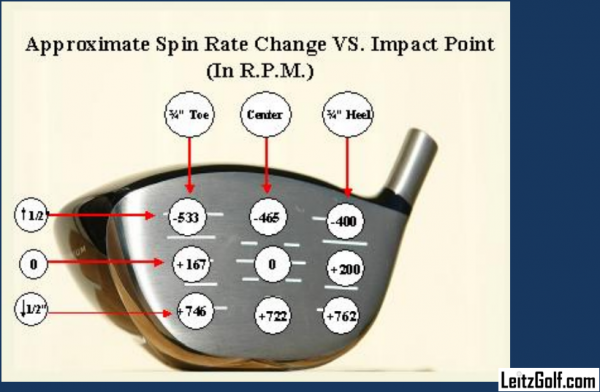











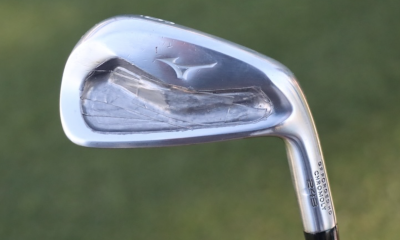

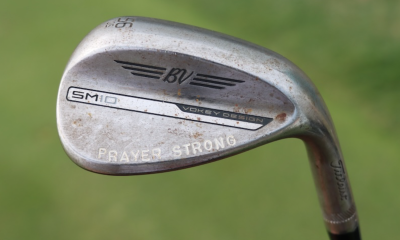

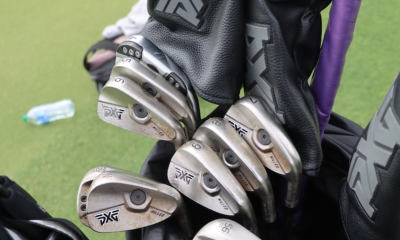

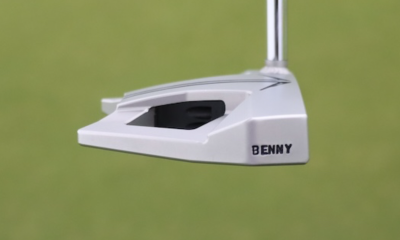

Pingback: What does the golf ball know? Very little, actually | GolfClick.net | Blog
Joe Golfer
Jul 31, 2014 at 1:25 am
Tom, excellent article.
I wonder just how far above the center of the face would be best to maximize one’s gains.
It seems that you still want to hit it on the sweet spot (or sweet zone area), but you want to hit it in the upper part of that sweet area.
Any ideas on just how far above that center of face might be best?
I see that the diagram has listings at 1/2″ increments, but that’s for experimental purposes.
Just curious if there is some magic amount that seems to work best for maximum results.
1/2″ above center, or slightly more or slightly less?
Tom Stickney
Jul 31, 2014 at 7:20 pm
Thx for the note; out of my pay-grade. I’m sure the rd guys whom do the robot testing would know to the degree you’re asking. I’d just shoot for a touch above the centerline.
Mike
Jul 30, 2014 at 2:27 pm
Great read, Tom. I’m guessing since I tend to fairly consistently hit my driver in the top right quadrant that I should stand further away from the ball. Wondering if I should adjust the lie angle as well, but I tend to hit my drives to the right so not sure how increasing the lie for less fade/more draw per the Titleist SureFit chart would go with standing further away.
tom stickney
Jul 30, 2014 at 5:37 pm
You could be chopping down and across the ball or standing up through impact…where are you located in the country and I’ll suggest a teacher whom can tell you for sure
Mike
Jul 31, 2014 at 1:25 pm
I’m in NYC and play most of my golf on LI. Anybody you can recommend would be appreciated.
wayne
Jul 30, 2014 at 2:15 pm
Good tip. I find that if I put a stripe on the ball with a dry erase marker, face the stripe towards impact, and strike the ball. Dry rease mark will leave an imprint on the face of the wood or iron, indicating where it was stuck. Marker comes off easily.
tom stickney
Jul 30, 2014 at 5:36 pm
dry erase works great on woods for sure
Dennis Clark
Jul 30, 2014 at 8:20 am
And it does not skew the spin. Tape does.
Tom Stickney
Jul 30, 2014 at 9:16 am
Spot on Dennis…thx
Pingback: How a cure for athlete’s foot can lead to longer drives | Spacetimeandi.com
Dave
Jul 29, 2014 at 7:47 am
Tom,
Thanks for the article. I started using your foot spray idea last winter and its made a huge difference this year in my ball striking.
One caveat though – I kept applying more and more spray and I never wiped it off the club head. That stuff is a bear to remove (especially irons) if you don’t wipe it off after every session. I’ve tried every solvent imaginable and I swear the stuff is bonded at the atomic level.
If anybody has found a good way to remove the spray after it dries please let me know.
marty
Jul 29, 2014 at 8:57 am
Try a product called “goof off” it is at home depot. I use it on my club faces. Make the look brand new.
Tom Stickney
Jul 29, 2014 at 1:11 pm
Thx
Tom Stickney
Jul 29, 2014 at 1:11 pm
It is funny how that can happen. Three shots wipe. Reapply
dmblanch
Jul 28, 2014 at 6:44 pm
Great article. I became a foot spray fan last year and I now use it all the time. Because it was so cheap and easy, I found myself taking it out at the range all the time and this lead to the discovery that in general I hit my driver too much on the heel, but my irons were high and toe-y. A slight move in at address on the irons at set up and a slight move away with the driver produced dramatic improvement with both.
Oddly, I never learned this lesson with impact tape. I think because I never had enough tape to compile a large and valid enough sample pool of impacts with which to learn anything. Also I used the tape in a faulty way. I’d take a few swings, and try to SWING differently to get the spot to appear in a different spot in the next few swings. With the spray, I kept the swing the same, observed where the strikes were falling and adjusted stance and set up to shift the impact point to the spot they needed to move.
Tom Stickney
Jul 28, 2014 at 8:59 pm
Awesome. Thx for the note.
Jeff
Jul 28, 2014 at 3:33 pm
Tom, Great article, as the club fitter at a TMPL and also a PGA instructor, this is pure evidence as to why A) you must be fit for equipment proper for your game and B) you must continue with instruction even post fitting because launch and spin conditions can very with off center contact quite dramatically and to be as efficient as possible, both components work together, no magic swing and no magic club yet
Tom Stickney
Jul 28, 2014 at 4:40 pm
Thx. If you find one let me know…